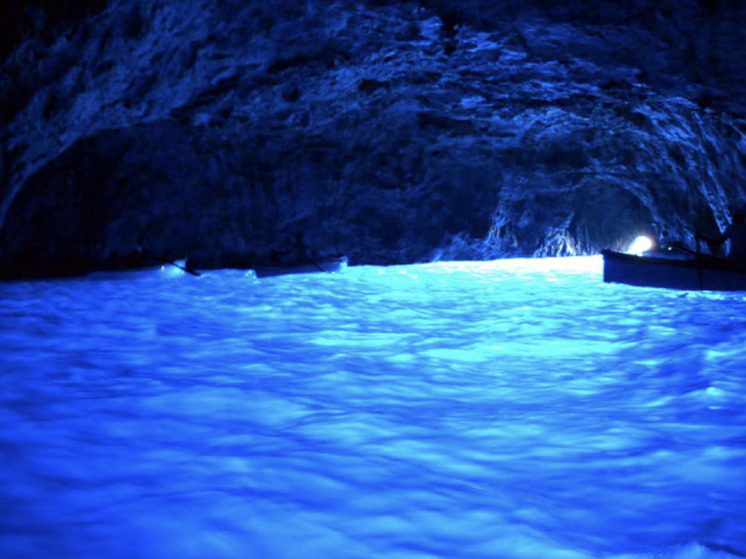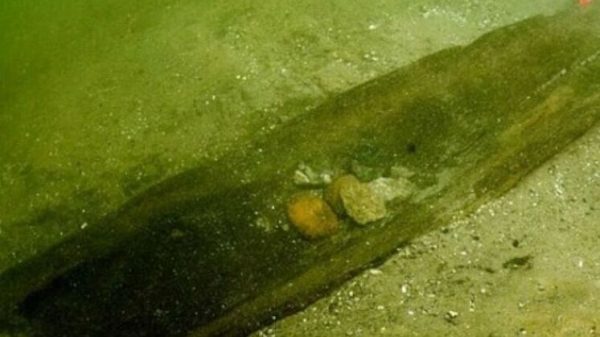Archaeological divers found a unique artifact off the coast of Capri
Underwater archaeologists discovered a valuable cargo lying on the bottom of the sea from a sunken Neolithic ship off the coast of Italy near the island of Capri. It turned out to be a fragment of natural obsidian, from which ritual objects have always been made.

Neapolitan archaeological divers, Live Science reports, discovered a large piece of obsidian near the Blue Grotto. The find in Italy was made a month ago, in October 2023, but it was decided to “classify” it so as not to attract vandals to the site of archaeological work. Now a piece of ancient obsidian has finally been lifted from a depth of 30 — 40 meters, with the participation of police divers.
The found “shard” is comparable in size to a tome and weighs about 8 kilograms. On its surface there are visible traces of a chisel, which gives scientists grounds to assume that the found fragment is the “core” of obsidian, from which the necessary pieces were cut off for the manufacture of both ritual and everyday objects.
Blue Grotto on Capri — a sea cave that is now an excavation site and tourist attraction. However, in 27-37 BC, according to one version, it served as a place for sea baths for the Roman emperor Tiberius. On the island, according to some sources, he had more than 12 villas, in which he lived in turns, fearing for his life.
This place is surrounded by legend and has long attracted both archaeologists and simply adventure lovers. Thus, it is believed that the famous underground passage leading to the villa from the grotto was a man-made structure. However, it is not. It is not underground, but a vertical tunnel, which is made in the rock with water slowly flowing down from above. Since the time of the Romans, the island has dropped (or rather, the sea has risen) about 4.8 meters, and the entrance to the grotto has gone under water, however, thanks to the transparency of the water, it is clearly visible through the thickness. The grotto was “opened” to the world several times. In the 17th century it was known as the Grotto Gradula, and in 1822 it was accidentally discovered by the fisherman Angelo, who received a lifelong pension for the discovery.
The grotto has been studied for centuries, and 15 years ago it was decided to reconstruct it. The grotto is famous not only for its historical value, but also for its incredible beauty — its water is azure in color, which changes under different lighting conditions. In imperial times, there was a recreation area at the water's edge, on which stood marble statues. Nowadays, only the pedestals remain in sight. The statues were hidden at the bottom for a long time, but archaeologists managed to discover three of them. Since there are seven pedestals, it was decided to expand the search area, as a result of which they found the site of the wreck of an ancient ship not far from the grotto of Tiberius.
The obsidian fragment is the first artifact discovered, but archaeologists expect to find others that are no less interesting. The ship itself has not survived — it simply “dissolved” with time. The shipwreck is defined as the Neolithic period, that is, it occurred more than 5 thousand years ago. Maritime archaeologist Sean Kingsley noted that the obsidian may have been intended for trade, but it could also have been transported to make ritual objects such as those found in the Neolithic Grotto delle Felci in Capri. There is also a version, the basis for which is provided by traces on a piece of obsidian, that narrow sharp “blades” were broken off from it to make various tools.
Work at the site where the obsidian was discovered will continue and perhaps the search area will expand again. Obsidian itself, without a doubt, was transported hundreds of kilometers from its place of extraction. In fairness, it should be noted that the ancient sailors were skilled and could easily cover a distance of about 100 or more kilometers 15 thousand years ago.
A discovery made at the bottom of the sea near the Blue Grotto suggests that our ideas about the skills of Neolithic people are incorrect, and they were able to move long distances, including by sea.

























































Свежие комментарии